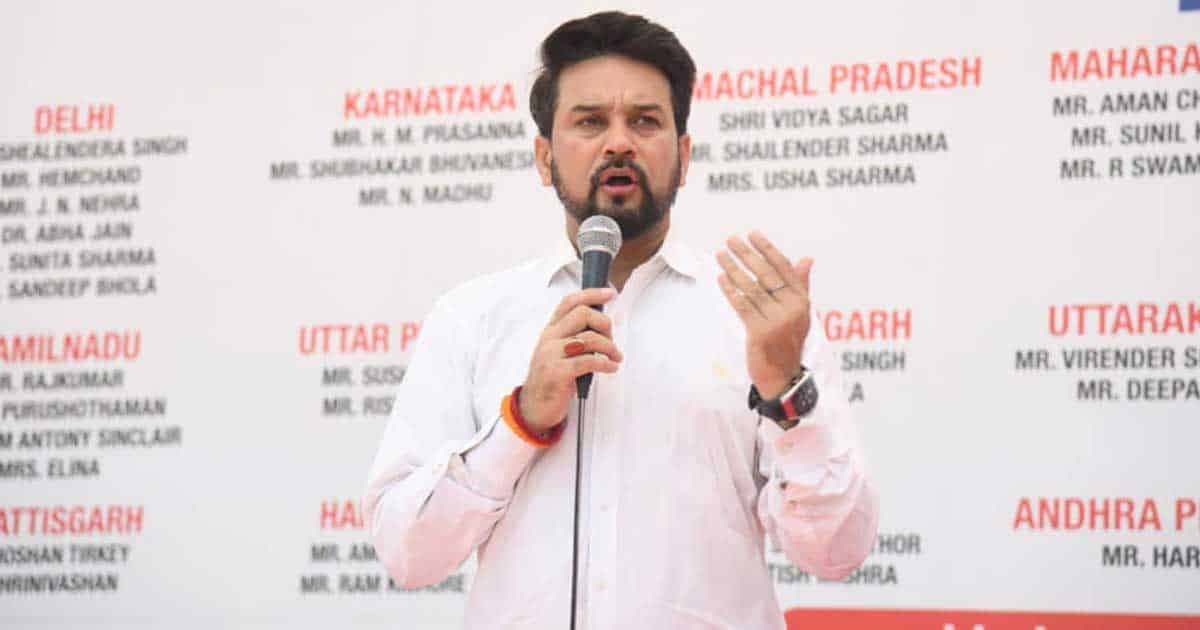
Union Information and Broadcasting Minister Anurag Thakur announced on Thursday that India is embarking on the world’s largest film restoration project under the National Film Heritage Mission (NFHM) with a budget of Rs 363 crore.
The restoration project, awarded on May 4, is set to begin in full swing at the National Film Archive of India (NFAI). Under the NFHM, approximately 2,200 films will undergo restoration. The titles have been shortlisted by language wise committees consisting of filmmakers, documentary filmmakers, film historians and producers, with members comprising eminent film personalities such as Aparna Sen, Shriram Raghavan, Anjali Menon and Vetrimaaran.
“The NFHM in addition to restoration also involves the on-going preservation processes of film condition assessment, preventive conservation and digitisation, with the total allocated budget of Rs 597 crore, which is one of the world’s largest film preservation missions,” Anurag Thakur said.
“Indian cinema, which has been in existence for more than a century now, holds a very unique place in the pantheon of world cinema. The restoration of Indian films will once again give a chance to the current and future generations to relive the glory of these films which have enamored audiences for decades,” Anurag Thakur added.
In the interim, the NFAI undertook restoration of 10 prestigious Satyajit Ray films which will be subsequently showcased at various International Film Festivals. Of this, “Pratidwandi” has been selected to premiere in the Cannes Classics Section in its 2022 edition.
The restored version of G. Aravindan’s 1978 Malayalam film “Thampi”, which will be showcased at Restoration World Premieres in Cannes by Film Heritage foundation, is also being collaborated for preservation with the NFAI.
Beyond Satyajit Ray films, feature films as diverse as “Neelakuyil” (Malayalam) and “Do Aakhein Barah Haath” (Hindi) will also be covered. Extremely important shorts and documentaries from the collection of the NFAI, Films Division and other rare materials, including pre-independence, will also be restored as they capture the growth of India like no other.
The process involves frame-to-frame digital and semi-automated manual picture and sound restoration from the best surviving source material. The source negative/print will be scanned at 4K to dpx files, which will be then digitally restored.
The damages including scratches, dirt and abrasions in every frame of the picture negative will be cleaned during the restoration process. The sound was also restored in a process similar to the picture restoration procedure. The numerous pops, hisses, crackles and distortions on the sound negative will be digitally removed. After restoration, the digital picture files will be colour graded (DI process) and balanced to achieve the look of the film at the time of the original release.
Must Read: When Priyanka Chopra Addressed Nepotism Revealing She Got Kicked Out At The Last Minute From A Film & “A Girlfriend Was Recommended”
Stay connected with us on social media platform for instant update click here to join our Twitter, & Facebook
We are now on Telegram. Click here to join our channel (@TechiUpdate) and stay updated with the latest Technology headlines.
For all the latest bollywood News Click Here
